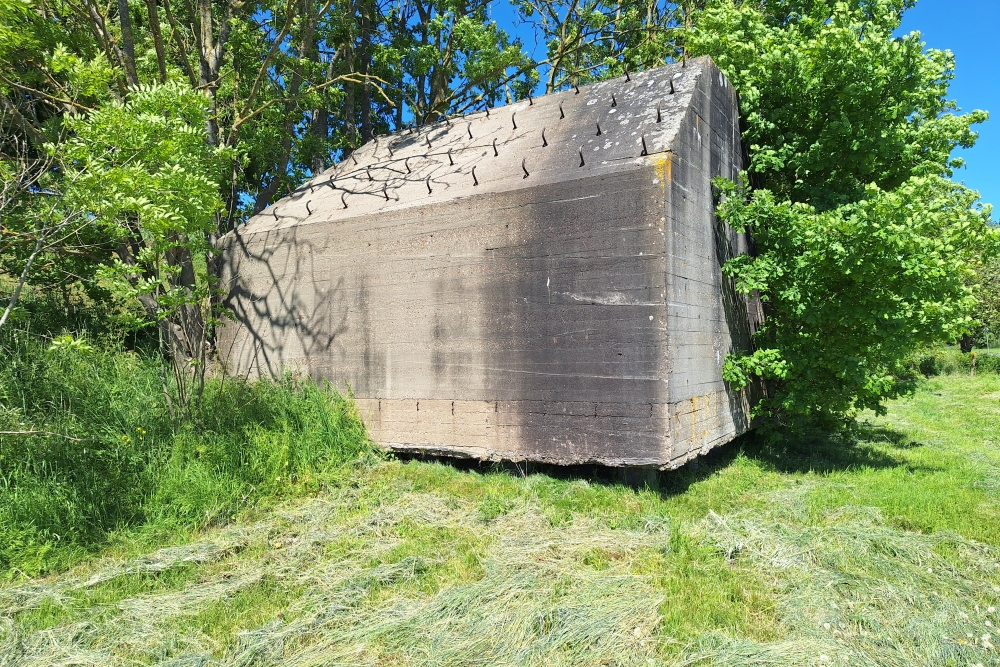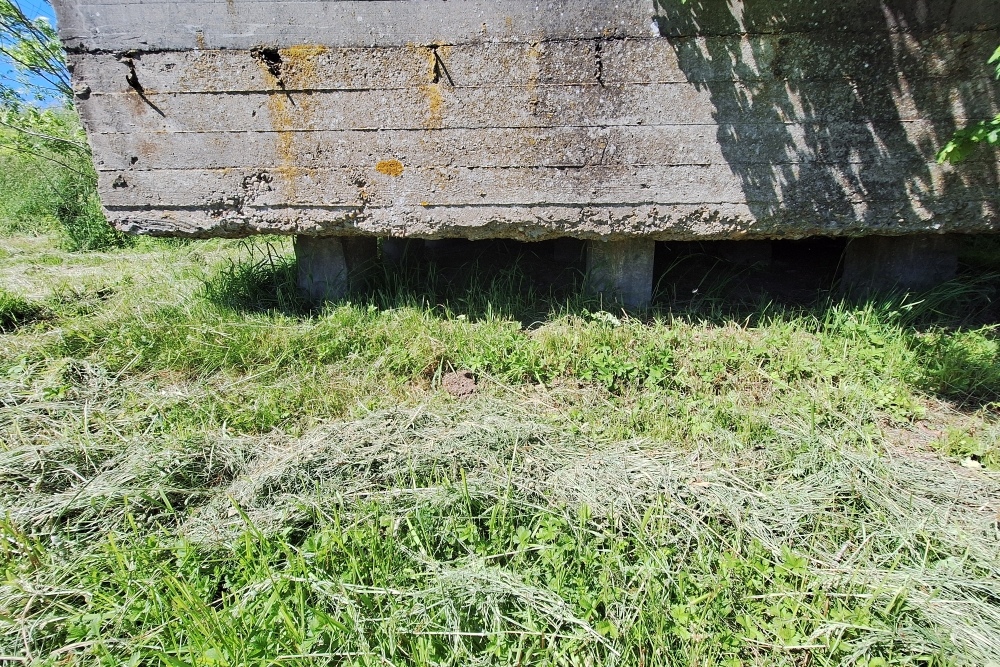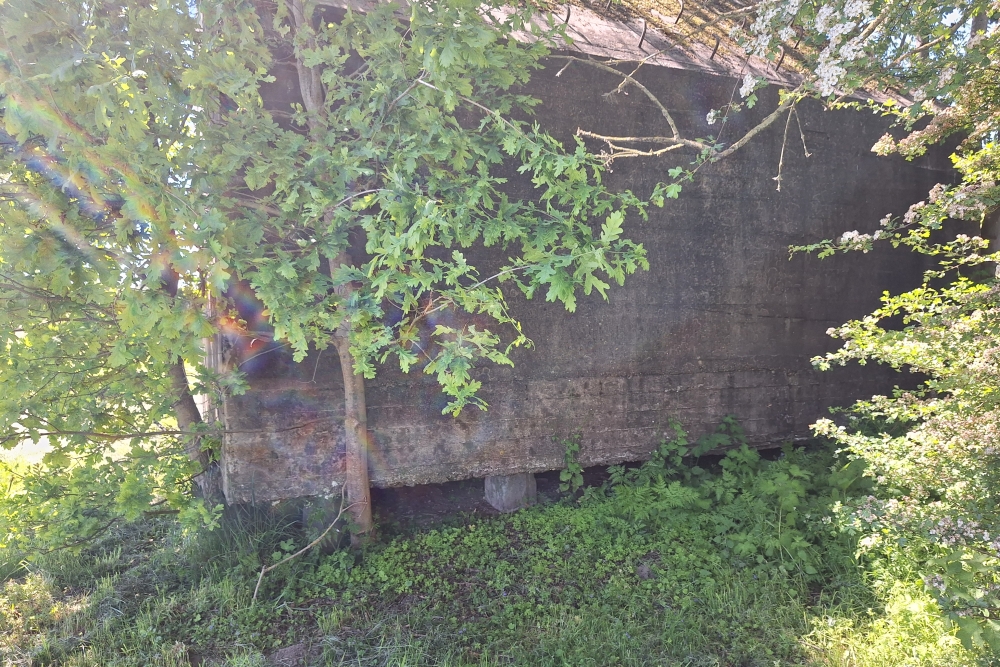Bunker Type P on Pillars
This is a special variant of a group shelter that is slightly different from the standard concrete bunkers.
What is the bunker on legs?
It is a bunker that, instead of standing directly on the ground, is placed on sturdy concrete pillars or 'legs'.
This design was intended to prevent the bunker from being in direct contact with the ground, which could prevent damage due to, for example, subsidence or moisture problems.
It also ensured that the bunker was slightly more resistant to undermining (explosions under the bunker that could damage the foundation).
They stand out because of their slightly raised position, which gives them a unique appearance compared to regular bunkers that stand flat on the ground.
Function and construction
Like other group shelters, these bunkers offered protection to soldiers against bombardments and grenade fire.
Standing 'on legs' was mainly a technical solution to improve durability and stability.
The Meerdijk bunkers type P are a special part of the Dutch defense line, specifically along the Meerdijk near Asperen, and here is some more about these bunkers:
What is a bunker type P?
Type P stands for “Pyramid bunker” because of the characteristic pyramid shape of the roof.
These bunkers were built around 1939-1940, just before the Second World War, as part of the reinforcement of the New Dutch Waterline.
They are intended as group shelters for about 10 to 12 soldiers.
Construction and design
Material: They are made of reinforced concrete, which makes them strong and resistant to grenade impacts and bombs.
Shape: The roof construction is pyramid-shaped and has a conical outlet that was intended for a periscope, but it was never installed.
Access: The entrance is at the back, with a corridor leading to a sheltered space inside.
Ventilation: The conical exhaust on the roof provided ventilation, essential because it was closed and heavy inside.
Function
The bunkers provided protection against artillery fire and bombs, keeping soldiers safe during bombardments.
They were intended as shelters, not as firing positions — they usually did not have their own weapons systems.
Soldiers could rest, consult and be prepared to respond quickly to enemy attacks.
Specific to Meerdijk
Along the Meerdijk, several type P bunkers have been preserved and/or reconstructed.
They are part of the New Dutch Waterline, which formed a strategic defense line to protect the west of the Netherlands by means of controlled flooding.
Do you have more information about this location? Inform us!
Source
- Text: RJArmy.nl
- Photos: RJArmy.nl
Nearby
Museum
Point of interest
- Trench Geofort - Herwijnen
- Fort Herwijnen - Herwijnen
- Information Sign Robert Milton Martin - Asperen
Monument
- Monument ‘Nova & Vetera’ Asperen - Asperen
- Logo Piron Brigade Leerdam - Leerdam
- War Memorial Leerdam - Leerdam
Cemetery
- Dutch War Grave Oosterwijk - Oosterwijk
- General Cemetery Leerdam - Leerdam
- Dutch War Graves Heukelum - Heukelum
Remembrance Stone
- Stumbling Stone Oranje Nassaulaan 16 - Leerdam
- Stumbling Stone Jeekelstraat 29 - Leerdam
- Stumbling Stones Voorstraat 93 - Beesd
Fortification
- Group Shelter Type P Meerdijk - Asperen
- Dutch G-Casemate Meerdijk - Acquoy
- Group Shelter Type P Meerdijk - Asperen







